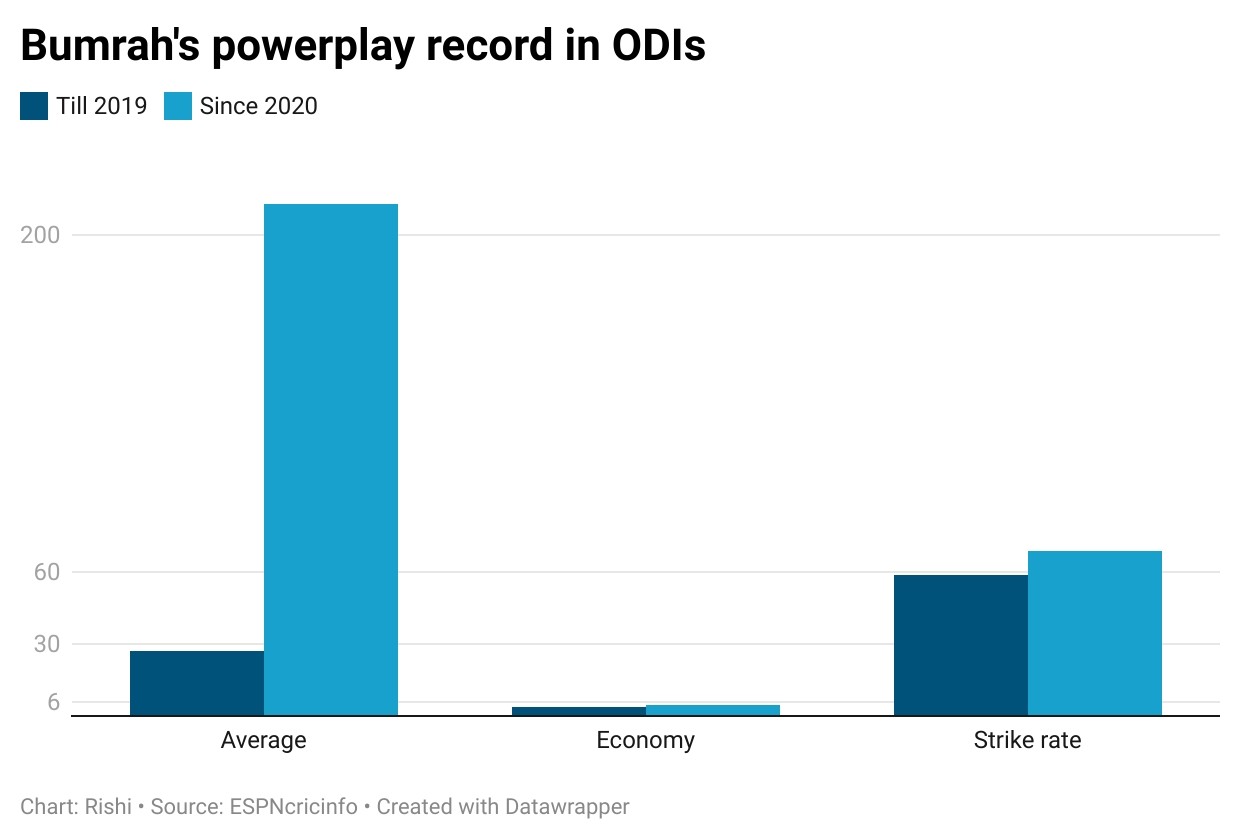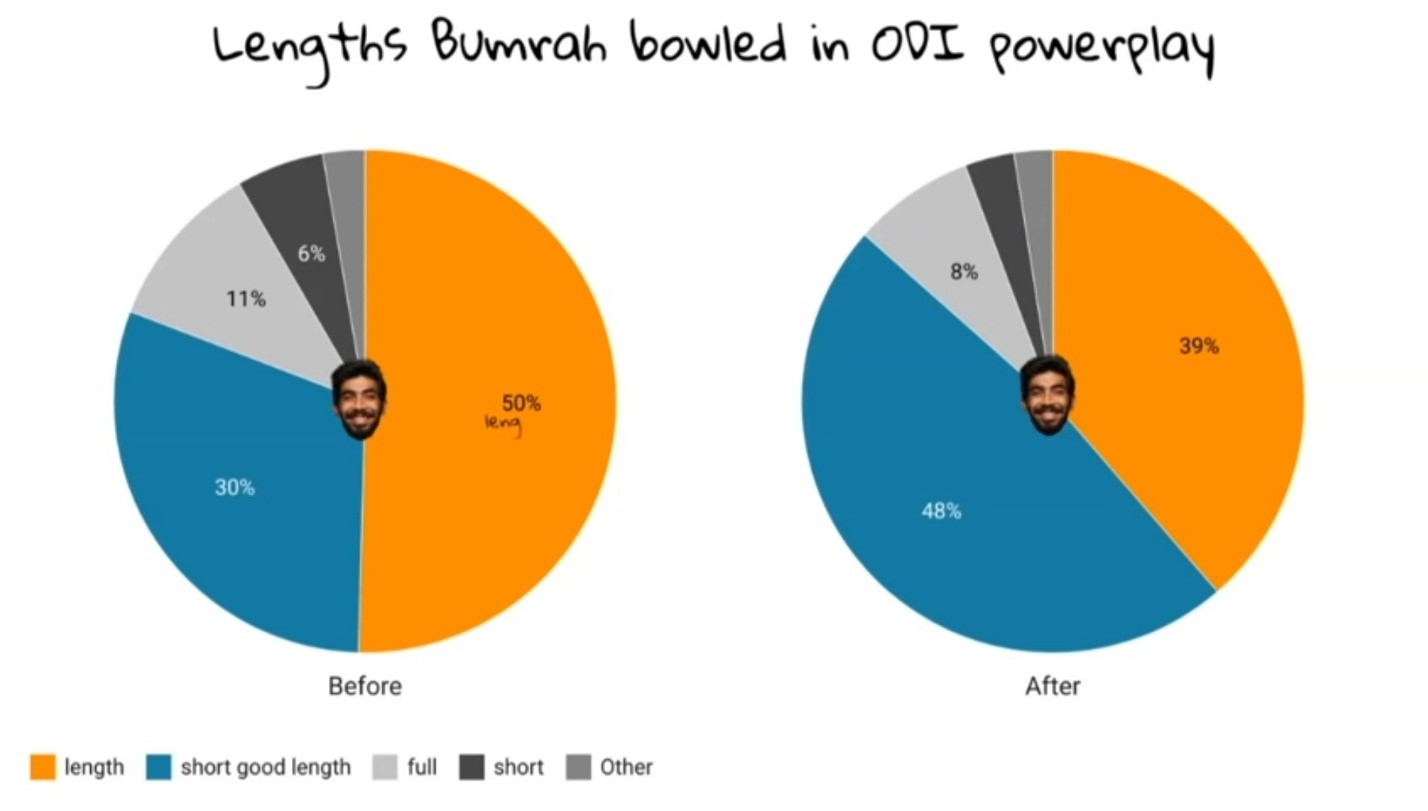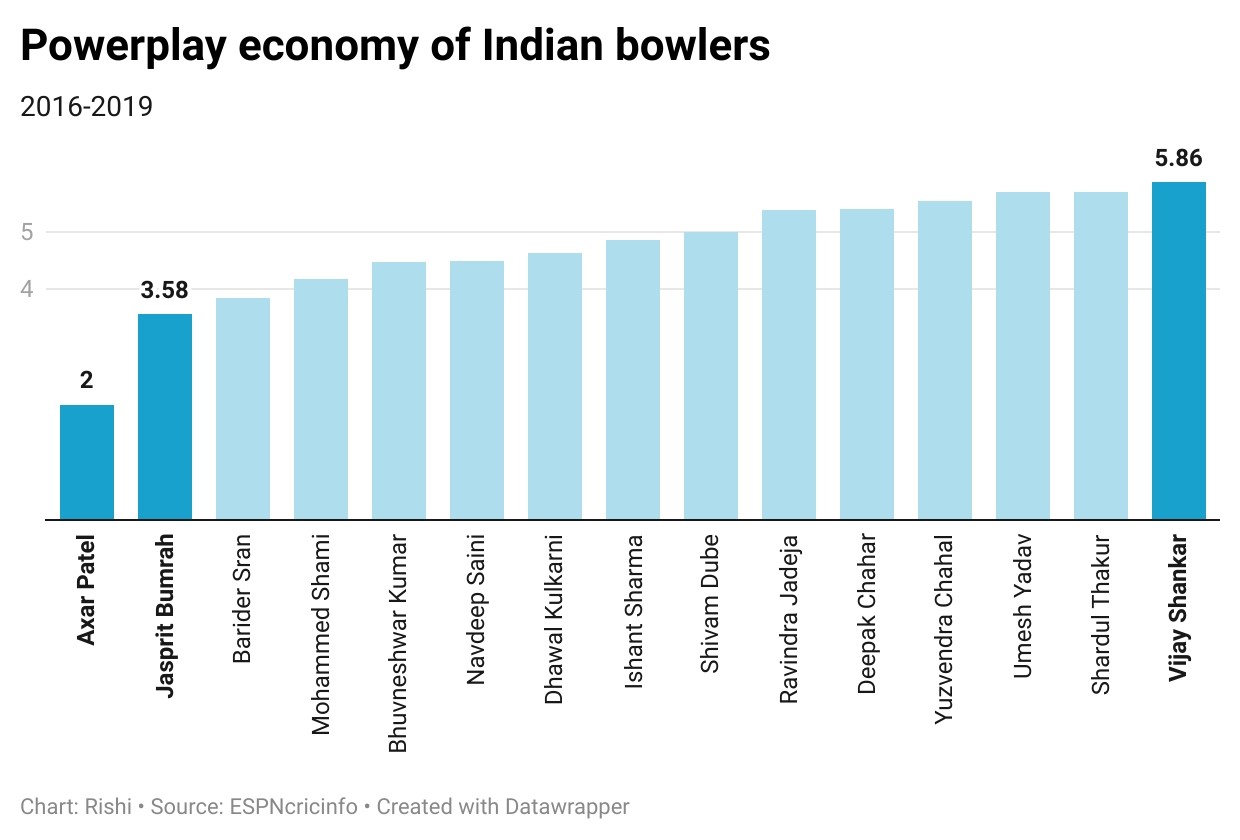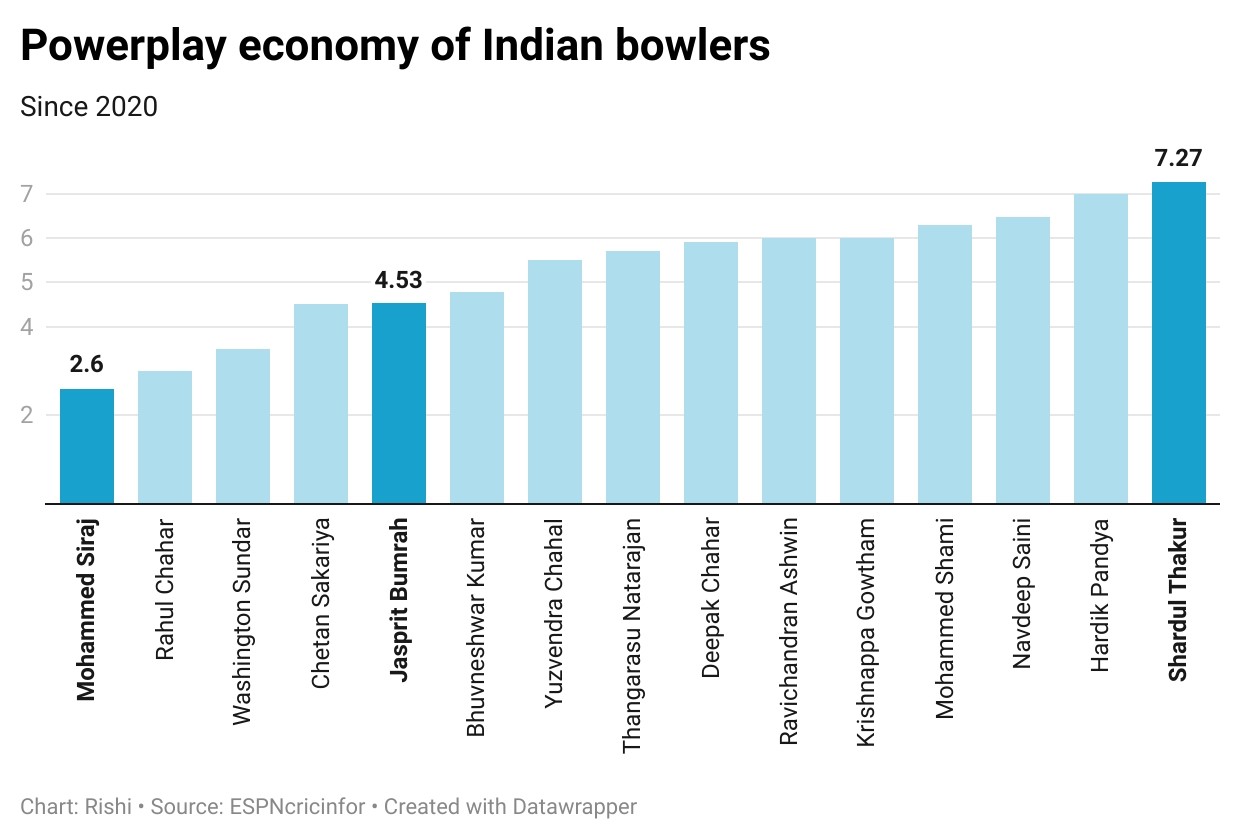
India's Powerplay problem
India's powerplay bowling has come under heavy scrutiny in recent times. Of course, you can't expect to be spared when you've hit a massive slump. India have the worst bowling average, economy rate and strike rate in the first ten overs in ODI cricket since 2020. If you are an Indian fan, you might have already heard that a depressing number of times over the past few weeks. But do India really have a powerplay-bowling problem or is it just a mirage?
The simple answer here is yes. It would be quite foolish to assume there isn't any problem when they have such poor numbers. But the severity of the problem may not be as alarming as it appears. A deeper look could throw some light.
Jarrod Kimber, in his recent video on the same subject, explained how India have always had a middling powerplay record with the ball. Their powerplay bowling average was 46.78 during 2015 - 2019 but they've almost doubled it since then.
As is the norm in India, the one who gets the most praise during victories will eventually get the most hate during failures. This time, though, there’s some justification for it. Jasprit Bumrah's inability to make early inroads has been pointed out by many as one of the major reasons for India's poor powerplay record. He indeed has the second-worst powerplay average (213) in ODIs since 2020. Is he that bad with the new ball?
Nobody with a fully functioning mind would say so. Those that have watched him bowl know how skilful he is. Nevertheless, let's take a look at his record just to be sure.
Bumrah's overall ODI powerplay average is 33.40. He even averaged 27.14 until 2019. His overall T20 powerplay average is 33.47. There's nothing in his record that suggests he isn't a good powerplay bowler. Surely he must be going through one of those tough phases that every cricketer goes through, right?

Let's make things a bit more interesting. During the period in question, Bumrah had an impressive powerplay average of 20.58 in T20 cricket. Now we are at Bermuda Triangle level of mystery with Bumrah's ODI record. What else can explain his uninspiring numbers then?
To make things clearer, let's take a look at his economy rate. We find that there isn't much of a difference between his recent powerplay economy (4.53 since 2020) and his career powerplay economy (4.08). He's still effective with the new ball, he has just randomly stopped taking wickets. Something must have changed but we can’t work out what it is.
 Image courtesy: Jarrod Kimber's Youtube channel
Image courtesy: Jarrod Kimber's Youtube channel
Jarrod comes to the rescue again. The above graph from his video suggests that Bumrah has changed his lengths. But why change something that was working so well? To understand this, let's see what's happening at the other end.
Thanks to the monopoly of cricket data, we don't have the necessary data to see what exactly happened at the other end when Bumrah was bowling from one end but the overall powerplay numbers of other Indian bowlers might give some idea.
Considering 2016 as the starting point (the year Bumrah made his ODI debut), the powerplay economy of other Indian bowlers was 4.70 until 2019 but it has gone up to 5.76 since then.

With a cut-off of 50 deliveries, Bhuvneshwar Kumar is the only bowler, other than Bumrah, to have a powerplay economy of 5 or under. In comparison, 5 bowlers conceded less than 5 RPO in the period between 2016 and 2019.


The leakage of runs from the other end means the onus is now on Bumrah to control the flow of runs which in turn forces him to bowl those defensive lengths. This could possibly be the reason why the percentage of fuller deliveries bowled by Bumrah has gone down.
Inside the powerplay, his situation is similar to that of a gang lord without his henchmen. He’s still a gang lord though. Bumrah might still have all the skills needed to pick new ball wickets but the lack of support from the other end doesn't help. India certainly have a powerplay problem at the moment but the usual implication that there is a shortage of resources is not true in this case. Given India's rich supply of talent, it should be a rather solvable problem.


 Rishikeshwaran
Rishikeshwaran
Write a Comment